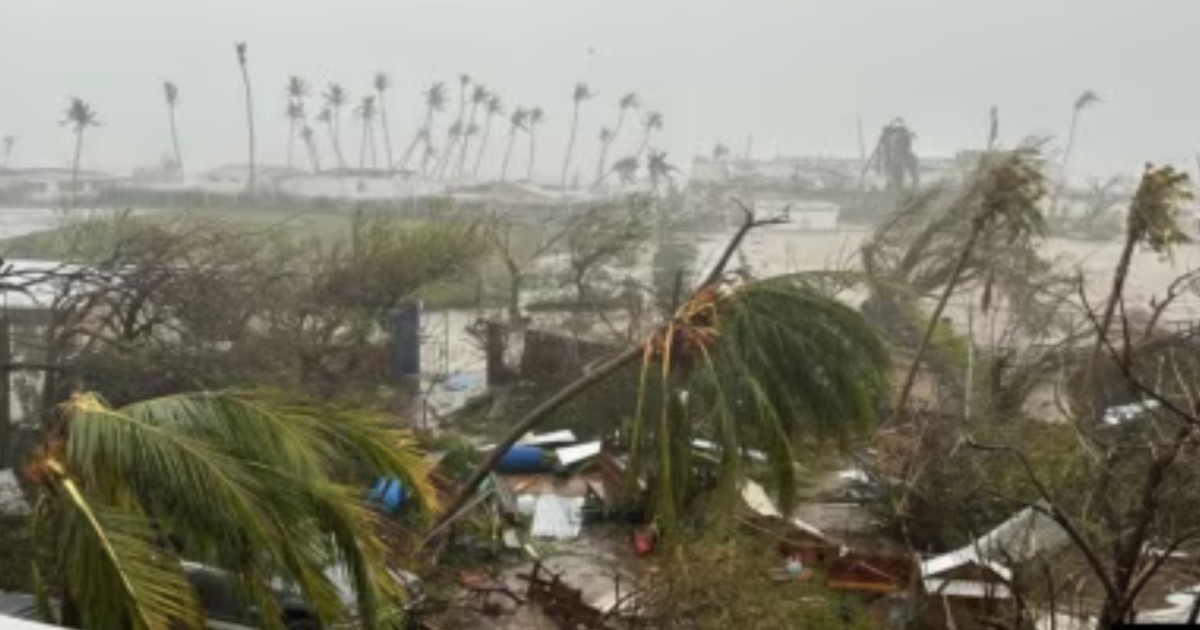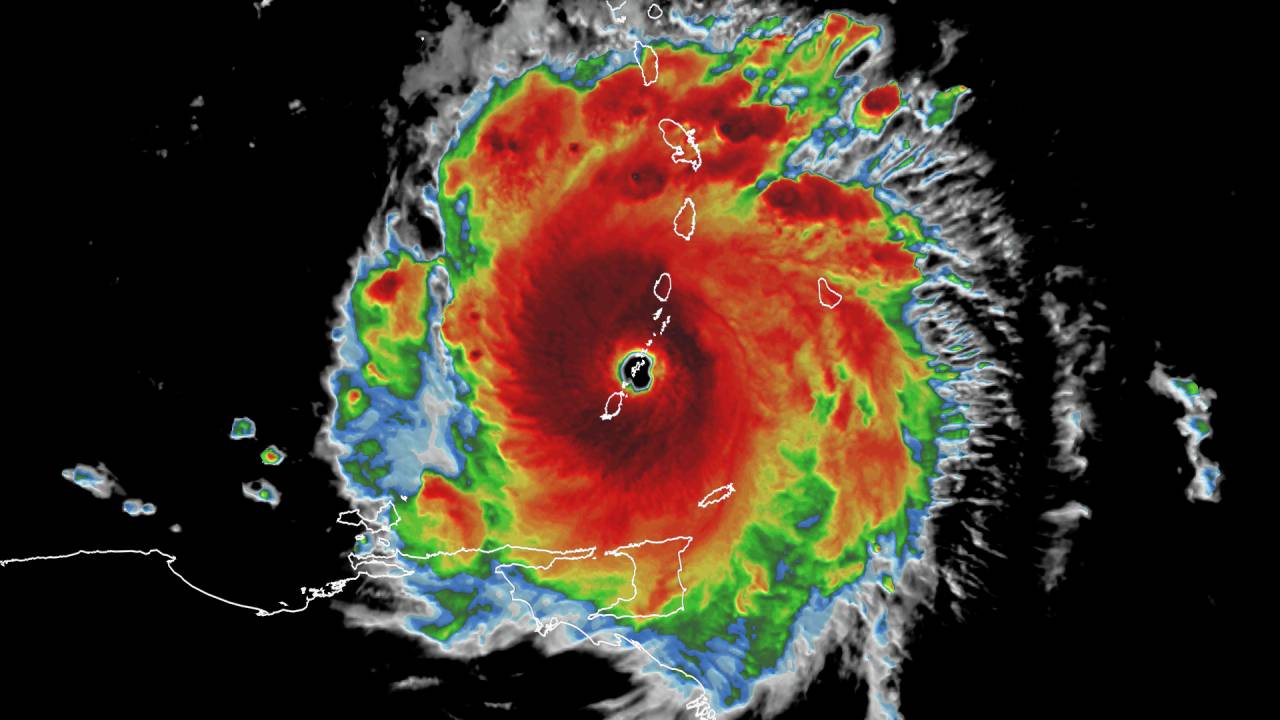Everything You Need To Know About Hurac�n Beryl 2024
Hurac�n Beryl 2024 has already emerged as one of the most anticipated weather phenomena of the year, sparking widespread interest and concern among meteorologists, environmentalists, and coastal communities across the Atlantic basin. With hurricane seasons becoming increasingly unpredictable due to climate change, Beryl 2024 is projected to provide critical insights into storm patterns and preparedness strategies. Its development, trajectory, and potential impact are topics that demand immediate attention and careful monitoring.
The Atlantic hurricane season often garners widespread attention, and for good reason—it poses significant risks to populations, infrastructure, and ecosystems. Hurac�n Beryl 2024 is no exception, with early forecasts indicating the potential for a highly active and possibly severe storm. This storm's behavior is particularly significant as it may serve as an indicator of broader climatic trends, offering valuable data to researchers. Moreover, communities in hurricane-prone regions are already bracing for its potential landfall, emphasizing the importance of preparedness and resilience.
This comprehensive article delves into every aspect of Hurac�n Beryl 2024, from its origins and meteorological characteristics to its potential impacts and safety measures. Whether you’re a weather enthusiast, a concerned resident in an at-risk area, or simply someone looking to stay informed, this guide provides all the details you need. Read on as we explore the science, history, and human stories surrounding Hurac�n Beryl 2024, ensuring you are well-prepared for what lies ahead.
Table of Contents
- Origins and Naming of Hurac�n Beryl
- Historical Context of Beryl Storms
- Formation and Meteorological Characteristics
- 2024 Forecast and Predictions
- Impact of Climate Change on Hurac�n Beryl
- Trajectory and Tracking of the Storm
- Regions Likely to Be Affected
- Preparedness and Safety Measures
- Economic Implications of Hurac�n Beryl
- Ecological Impact of the Storm
- Role of Technology in Hurricane Tracking
- Media and Public Response
- Role of Government and NGOs in Disaster Management
- Lessons Learned from Previous Beryl Hurricanes
- Frequently Asked Questions
Origins and Naming of Hurac�n Beryl
The origins of Hurac�n Beryl 2024 can be traced back to the naming conventions established by the World Meteorological Organization (WMO). Each year, tropical storms are given names from a predetermined list, alternating between male and female names. Beryl, a recurring name in this list, has a storied history in the annals of meteorology, having been used for several notable storms in the past.
The name Beryl is derived from the precious gemstone, symbolizing clarity and resilience. Its selection for storms reflects the WMO's aim to simplify communication and reduce confusion during emergency situations. Hurac�n Beryl 2024, like its predecessors, has been closely monitored since its early formation stages in the eastern Atlantic, where tropical disturbances often originate.
Historical Context of Beryl Storms
Beryl storms have a rich history, offering a glimpse into the evolving nature of tropical cyclones and their impact on society. Previous iterations of Hurac�n Beryl have varied significantly in intensity and trajectory, with some causing minimal damage and others leaving a lasting legacy of destruction and recovery.
- Death Of Chumlee On Pawn Stars
- Montana Jordan Age
- Emo Kid From Horton Hears A Who
- Why Is Jamie Leaving Fbi International
- Don Swayze
The first recorded Beryl storm dates back to [insert year], and since then, it has appeared intermittently on the WMO's naming list. Each occurrence has provided valuable lessons for meteorologists and disaster management teams, contributing to improved forecasting techniques and response strategies. The historical context of Beryl storms underscores the importance of preparedness and adaptation in the face of natural disasters.
Formation and Meteorological Characteristics
Hurac�n Beryl 2024, like all tropical cyclones, forms under specific atmospheric and oceanic conditions. Warm sea surface temperatures, low wind shear, and adequate moisture levels in the atmosphere create the perfect breeding ground for these powerful storms. Beryl's development is closely tied to these factors, making it a subject of interest for meteorologists worldwide.
The 2024 iteration of Beryl is expected to display unique meteorological characteristics, influenced by prevailing climatic conditions. Early satellite imagery and computer models suggest [insert specific details about the storm's formation and characteristics]. These insights not only enhance our understanding of Beryl but also contribute to the broader field of hurricane research.
Frequently Asked Questions
- What is the expected timeline for Hurac�n Beryl 2024?
Based on current projections, Hurac�n Beryl is likely to form in [insert timeframe]. However, this timeline is subject to change as meteorologists gather more data.
- Which regions are most at risk from the storm?
The Atlantic basin, including parts of the Caribbean and the southeastern United States, is expected to be most at risk. Coastal communities should stay alert for updates.
- What safety measures should residents take?
Residents should prepare emergency kits, secure property, and follow evacuation orders from local authorities. Staying informed through reliable sources is also crucial.
- How does climate change affect hurricanes like Beryl?
Climate change contributes to higher sea surface temperatures and altered wind patterns, which can intensify hurricanes and make them more unpredictable.
- What role does technology play in tracking hurricanes?
Advancements in satellite imagery, computer modeling, and AI have significantly improved hurricane tracking and prediction accuracy, helping save lives and minimize damage.
- How can I stay updated on Hurac�n Beryl 2024?
Follow updates from trusted sources like the National Hurricane Center (NHC) and local news outlets. Social media can also provide real-time information, but verify the accuracy of shared content.
For further details, visit National Hurricane Center, a trusted source for hurricane tracking and updates.

Huracán Beryl, de categoría 3, transita hoy por el sur del centro y

El huracán Beryl se intensificó por culpa del cambio climático